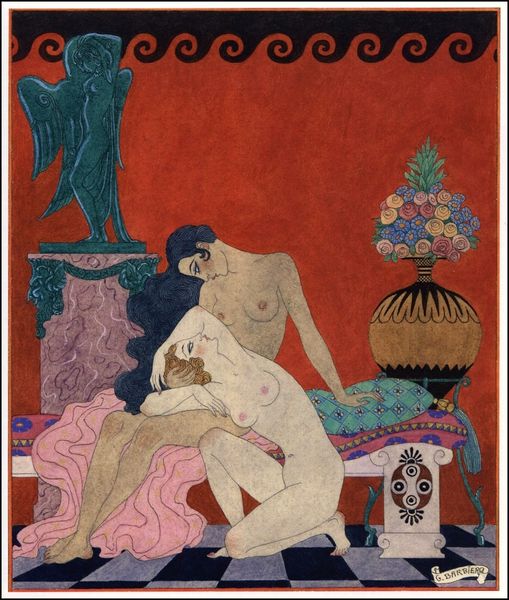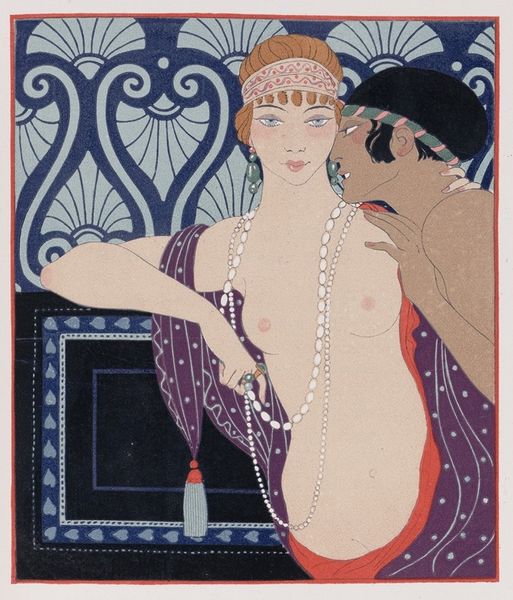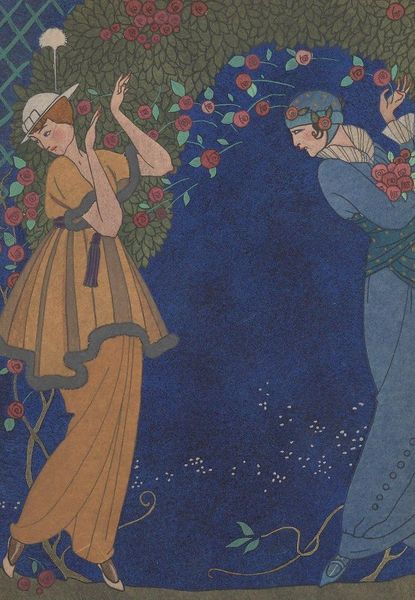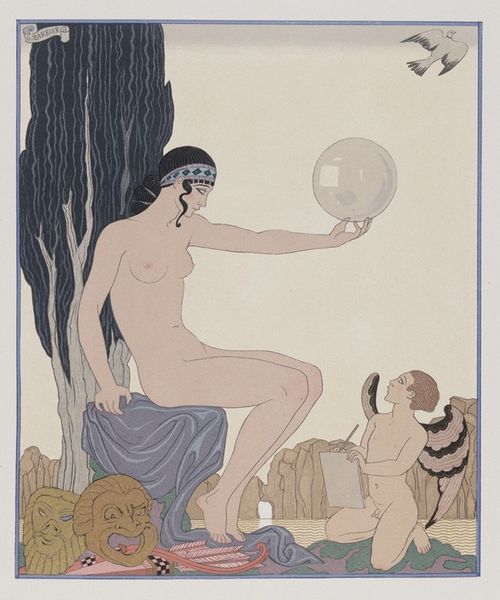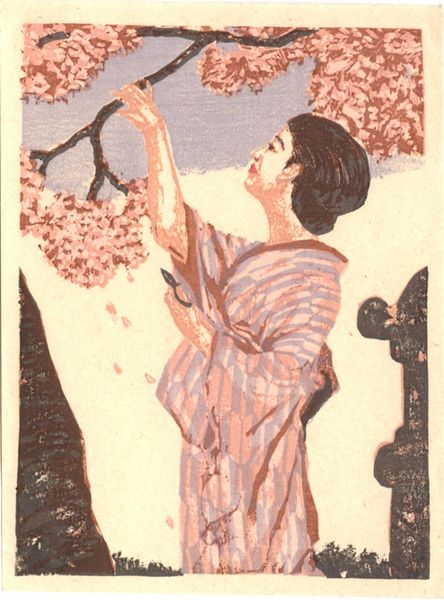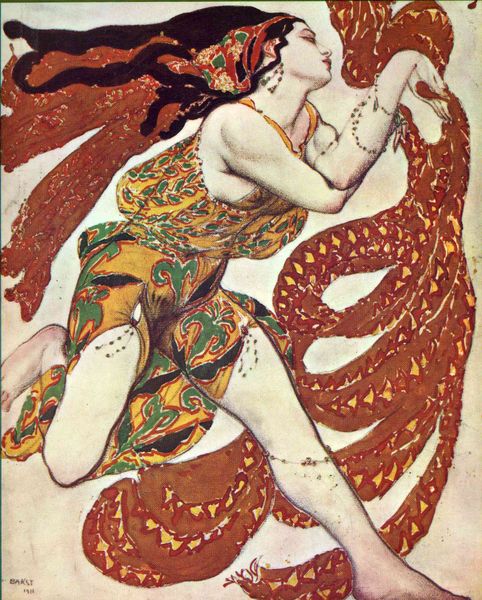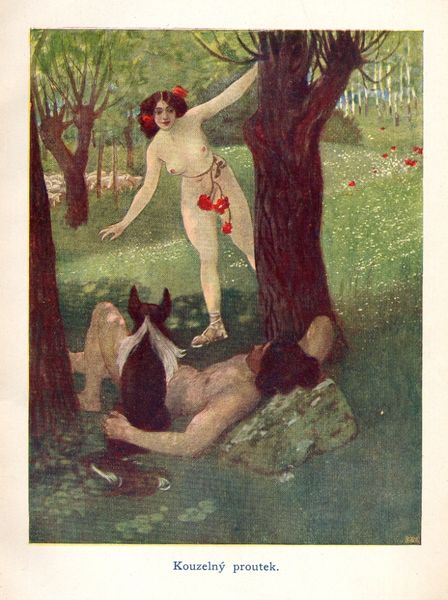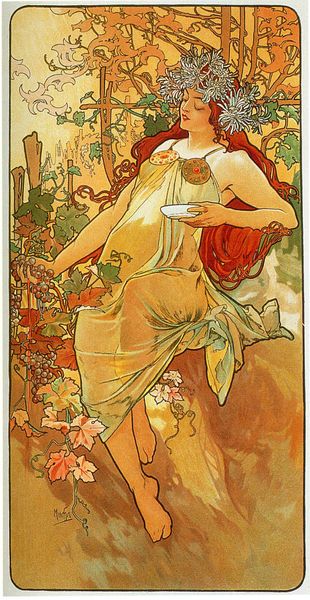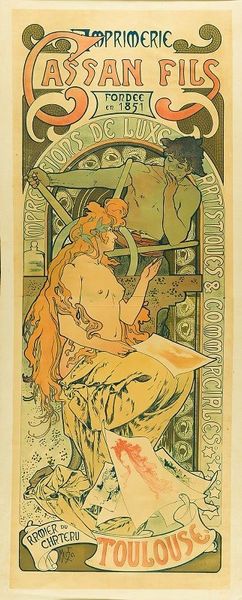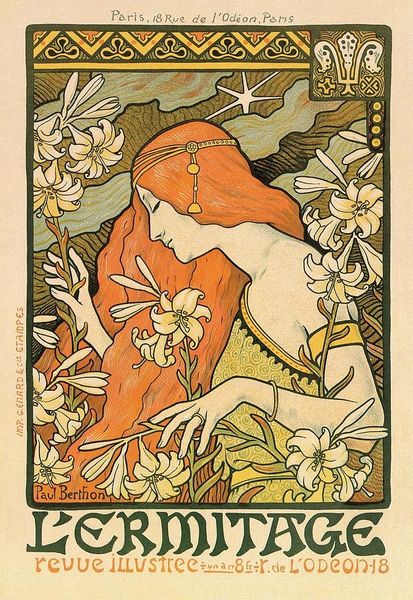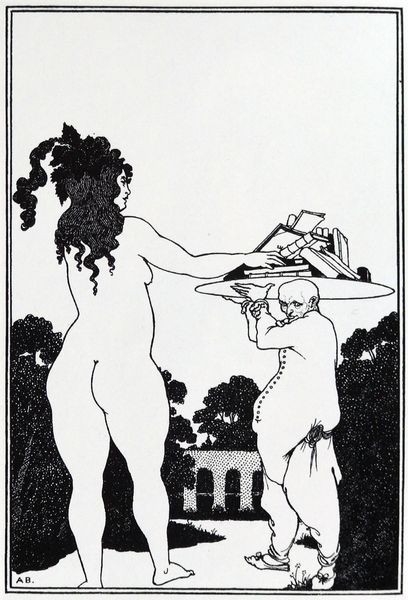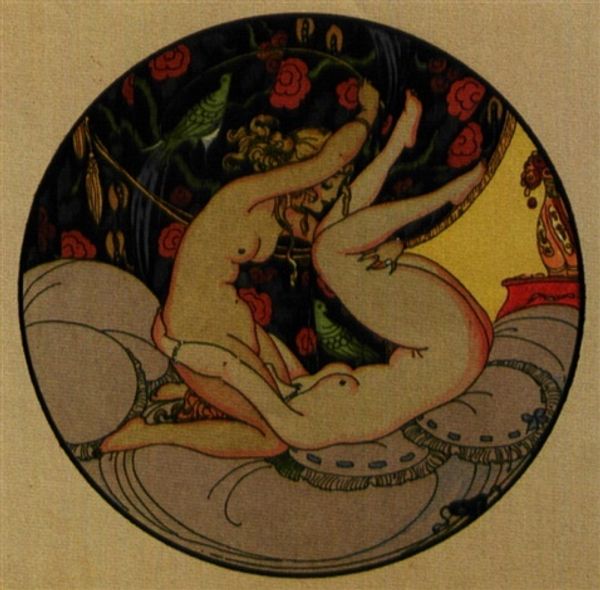
Copyright: Public domain
Curator: Let's discuss "Songs of Bilitis", a print by George Barbier, created in 1922. It showcases the distinct elegance of Art Nouveau, doesn't it? Editor: Indeed. My first impression is that it’s incredibly stylized. The figures have an almost dreamlike, ethereal quality about them, yet there's also an underlying melancholy, would you agree? Curator: I'm particularly drawn to how Barbier employs line and color. The composition features a delicate balance of curves and straight lines that, with muted shades creates depth despite the surface being generally flat. Editor: It speaks to the male gaze prevalent at the time. The female nude was often presented as an object of aesthetic contemplation, divorced from agency. What narrative is woven around these women and are we only seeing what men at that time wish us to see? Curator: The stylistic features certainly evoke a sense of an imagined past, referencing classical themes. There's an interplay between decorative patterns and symbolic representation in how, for instance, white doves contrast the rich tree. Editor: And consider Bilitis herself. She was this constructed figure – a woman whose supposed poetry celebrated lesbian love. Pierre Louÿs' work surrounding Bilitis fueled much desire and scrutiny, with its depiction of Sapphic relationships. Do you not see Barbier placing these women in relation to this male fantasy of lesbian eroticism? Curator: The stylized nudity removes any immediate reference to recognizable contemporary experiences or issues and redirects instead to aesthetic beauty in form. The flowing drapery and graceful postures, while idealizing the female form, also contribute to an overall sense of refined taste and decorum. Editor: Yet that beauty, those graceful postures are embedded in a history of exotification and male desires of the “other.” In order to appreciate the line, the coloring, we must never forget whose view this image most flatters. Curator: Your point about the image’s relation to contemporary cultural constructions is well taken, and such intersectional perspectives bring the artwork into further interesting engagement. Thank you for enriching my perception. Editor: Thank you. Context, as always, allows us to continue discovering novel avenues into past works.
Comments
No comments
Be the first to comment and join the conversation on the ultimate creative platform.
